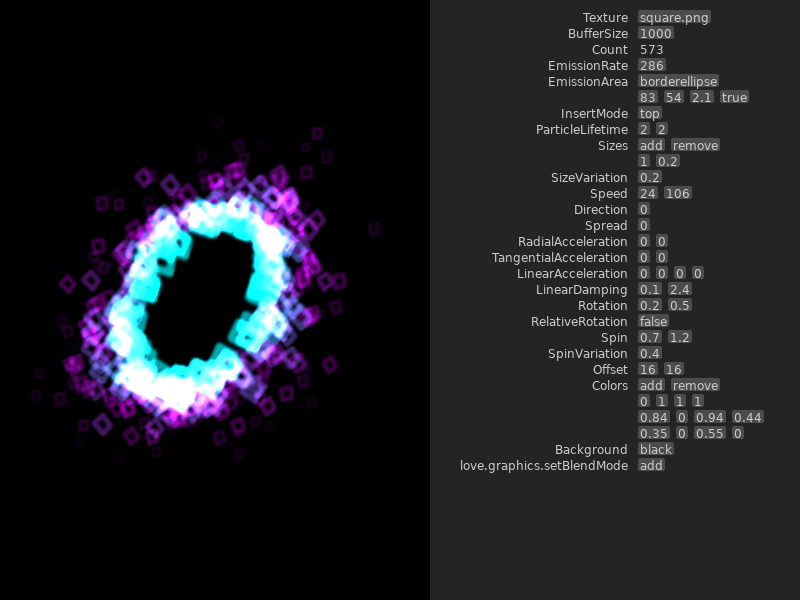
This means your play area not only looks better for longer, but it also means lower long-term costs. Particle Physics Playground provides simplified data and python tools, that allow you to interact with real particle physics data.
PARTICLE PLAYGROUND FEATURES HOW TO
UltraTop is the highest density top layer available, providing superior durability and an expected life that is more than 100% longer than other rubber playground tiles. Particle Playground 3, intended to inspire and give ideas how to bend particles your way. With this system, a super high-density 3mm layer of Spectra EPDM granule sheeting is molded directly into the tile. although the uniformity of the particle size must now be confirmed. The playground tiles with the highest durability and longevity is UltraTop. The Particle Playground framework features can all be called through scripting where both C and JavaScript is available. and industry best practice for Childrens Playground Equipment and Surfacing. The factory-molded tiles are available in three top designs: Pigmented, EPDM, and UltraTop. SpectraBound Tile safety playground surfacing may be used to provide ADA access to existing playgrounds, to retrofit existing play areas, or to fill entire new playgrounds with quality rubber surfacing that stays in place during use. with layers using Layer Map (Pro only) on page 504.).
PARTICLE PLAYGROUND FEATURES GENERATOR
Everyone can enjoy play on our unique and durable rubber tile surface! Specifies the particle generator or combination of particle generators whose particles you want affect. Animating the layer in the Timeline panel animates the entire layer of particles. The tutorial concentrates on making snow stick to actors and things more than on being realistic looking snow. He'll also shows how to make the snow stick to other layers in your composition. The layer becomes an invisible layer in which only the particles are visible. Jerzy Drozda Jr (aka Maltaannon) demonstrates how to generate snow using Particle Playground in After Effects.

Choose Effect > Simulation > Particle Playground.

SpectraBound Tile is used for a wide range of play applications such as patio play areas, daycare and school activity areas, fast food restaurant play areas, shopping mall play areas, and other community spaces. Select the layer on which you want particles to exist, or create a new solid layer.

Stefan Floerchinger at the University of Jena in Germany, who was part of the research team, says that future experiments with the same system could lead to a better understanding of quantum properties of our universe.SpectraBound Tile rubber playground safety surface reduces the risk of injury associated with falls from playground equipment, but also provides unique designs and comfortable walkways for parks, playgrounds, and other play areas. Physicists don’t quite know how the two combine in the universe we live in, but experiments with ultracold atoms may let them try out some ideas, and they could inspire new targets for observations in our much larger and more complex cosmos, he says. The researchers say this suggests that the particle pairs can be produced in an expanding universe, like our own.Īlessio Celi at the Autonomous University of Barcelona in Spain says that the new experiment is a very precise playground for putting together quantum effects and gravity. When the researchers used their projector to make atoms mimic an expanding universe, the atoms moved in exactly the kind of ripple pattern that would be expected if pairs of particles were popping into existence – a phenomenon called particle pair production. Read more: Frozen cloud of molecules acts as a single quantum object Atoms in this phase can be controlled by shining light on them – using a tiny projector, the researchers precisely set the atoms’ density, arrangement in space and the forces they exert on each other. Markus Oberthaler at Heidelberg University in Germany and his colleagues cooled more than 20,000 potassium atoms in a vacuum, using lasers to slow them down and lower their temperature to about 60 nanokelvin, or 60 billionths of a degree kelvin above absolute zero.Īt this temperature, the atoms formed a cloud about the width of a human hair and, instead of freezing, they became a quantum, fluid-like phase of matter called a Bose-Einstein condensate.

It could be used to help us understand cosmic phenomena that are exceedingly difficult to directly detect, such as pairs of particles that may be created out of empty space as the universe expands. An experiment with cold atoms suggests that particles pop up out of empty spaceĪn analogue of a tiny, expanding universe has been created out of extremely cold potassium atoms.


 0 kommentar(er)
0 kommentar(er)
